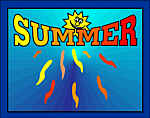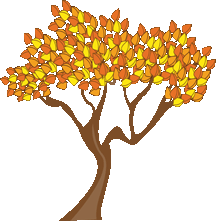|
Autumn Barnyard
Hints for the Farm

|
In The Barn
Ready For Winter -
Disconnect and drain hoses so they don't freeze.
Install any protective curtains on doors or sheds for
winter.
Wash and ready all llama and cria coats.
Unsuspected Hazards -
In a nice, warm medical room, a cria stuck his head in the U shaped loop under
the sink, trapping him and causing strangulation. He didn't know to pull his head
up and out. This type of injury has also happened out in the pastures in low forks
of trees that just happen to be the right size.
Hay Bag Safety -
Hay bags are useful if used only with supervision. Animals can get their heads into
the mesh hay bags and as they eat the hay, the bag then can become tangled
around their neck. Some have even gotten their legs in them. The heavy vinyl hay
bags are somewhat better, but the same danger is there. As the animals eat the
hay, they stick their head in further and further and sometimes become stuck or
tangled. Never use hay bags in the trailer when traveling ... just put the hay on the
floor. And if you use hay bags at a show, stuff the bags as full as possible before
leaving for the night. Hay bags are not recommended for everyday use on the farm.
Baling Twine -
Twine from the hay bales has often caused injuries,
sometimes deaths. One llama
owner tells of the twine getting wrapped around the
llama's neck and the llama
broke her neck trying to get loose. Baline twine
can also cause obstructions when
llamas swallow the twine.
Storing Hay -
If storing hay in the loft of the barn, don't put bales
close to the edge. They have
been known to fall on animals and cause death.
Llama Care
Vitamin A & D
-
Time to consider if you're in an area that needs to give Vitamin A&D
to crias
during the months of October through May due to lack of
sun. Prevent rickets.
Collecting Urine Samples -
Create a cup-on-a-stick. Attach a jar or cup to a broom stick or some other long
pole using a hose clamp (the kind they use in car engines). The cup fits securely in
the clamp and keeps it upright. Hang out quietly in the "pile area" and when your
subject takes their turn, you can slowly extend the cup-on-a-stick to a position to
catch the urine.
In The Barnyard
Large, Round Hay Bales -
When using these large hay bales, put them up on a pallet off the ground. Slugs,
snails, and other creatures can winter very well in the warmth under the large bales.
It can be a possible haven for the snail that carries Meningeal Worm, a deadly
parasite to the llama.
Further caution has been suggested for using the large round hay bales. The large
bale can become dangerous to small stock or crias when the bales collapse or topple
over as the animals eat on them and unbalance the heavy bale. Also several
instances of botulism (due to dampness in the bales) have been reported in llama
herds and also with other livestock. On the other hand, many farms use the large
bales consistently with no problems. Proper baling is imperative.
Bungee Cords -
Injuries can happen when you least expect them. Use caution as to where to use
bungee cords. They can break or just snap loose with such a force it can cause
injury. If just left hanging within reach of the animals, they tend to play with them.
This situation is also capable of causing severe injury when the hook catches on the
animal and springs back.
Extra Gates -
Don't leave extra gates or panels just leaning up against the fence or wall of the
barn. Curious or pushing animals can knock the gates over causing serious injury
or death to another animal. Take extra care to secure all items that can possibly tip
over .
In The Pastures
-
Gates & Openings -
The distance between the opening end of the gate and the fence post, or the distance
between two gates as they meet, is crucial and can eliminate a possible death. The
animal sticks its head through this opening pushing against the gate and making
the opening larger. When it pulls its head back to get out, the gate tightens up and
traps the animal's neck possibly causing strangulation. The more the animal pulls
and struggles, the tighter the gate becomes. Allow no bigger opening than a couple
of inches so the animal can't get its head in there in the first place.
-
Extra Gates -
Don't leave extra gates or panels just leaning up against the fence or wall of the
barn. Curious or pushing animals can knock the gates over causing serious injury
or death to another animal. Take extra care to secure all items that can possibly tip
over .
-
Fencing -
No fencing is 100% safe, but numerous tragic deaths have been reported due to
electric wire fencing.
-
Holes & Ditches -
Periodically you should walk your pastures looking for
holes.
Sunken areas and
holes mysteriously appear in the pastures from time to time. Sometimes mole
tunnels may be the cause. These are often the causes of leg injuries and sprains to
the animals.
Ditches and even some deeper dust bowls can cause the animal to be trapped in an
upside down position when rolling. Rumen gasses then build up - perhaps causing
death. Read these unfortunate situations.
-
Halters -
Always remove halters from your animals when they are loose in the pasture or the
barn area. There have been reports of the halter accidently getting caught on
something and causing injury to the animal.
-
Coyotes -
You'll probably hear the coyotes howling at night this time of year .... most
likely
calling to their mates and establishing territorial boundaries. Although coyotes are
a feared predator of llama herds, we know of no actual coyote attack on llamas.
Most attacks, maybe originally assumed to be a coyote, turn out to be the
neighbor's dog or dogs just running loose. Dogs, either alone or in a group, will go
for the rear quarters of the llama and viciously rip it apart. A coyote normally
attacks the neck. Coyotes prefer small rodents, rabbits, and birds and will possibly
raid your hen house. They also are extremely territorial and will keep other coyotes
away. Read a little more about this interesting villain of many folk tales ......
the
coyote!
-
Meningeal Worm -
Most cases of meningeal worm are diagnosed in the fall and winter. If you live in a
White Tail Deer area, keep up those Ivermec or Dectomax shots as a
preventative
for meningeal worm. Symptoms can include, but are not limited to, staggering,
shaking, legs crossing over, head tilting, circling, weakness, loss of appetite, and
shivering. Treat immediately. As a preventative, deworm monthly with Ivermec. At
least until a good, heavy frost.
To complete your M-Worm prevention program, consider free roaming Muscovy
Ducks or Egyptian Geese. They'll eat a large percentage of the garden slugs that
carry the parasite.
-
Males Sharing Pastures -
When putting a male back into a pasture with his other male pasture-mates, to
avoid him (and you) possibly getting rammed, take all the males out of the pasture
for a few minutes. Then bring the one and also the entire group back in all together.
Now they are all on equal terms. Probably no fights.
-
Burning Leaves & Brush -
Fence your burn piles! Llamas have been known to
walk though ashes and remains
of burn piles and burn their feet. And they also will
roll in the hot ashes - love that
dust!
|

Laws Of Farming
How come........?
The more complex the part to repair the tractor is, the
greater the
chance that you will get the new employee
who is working his first day
at the parts order counter.

|
 Return To
Barnyard Hints Or.... Return To
Barnyard Hints Or....

Spring On
The Farm |

Summer On
The Farm |

Autumn On
The Farm |

Winter On
The Farm |
|
Back to Home Page

Thank you for visiting Hamilton Co. Llamas,
Inc. Please don't hesitate
to leave a message if you have any questions or comments.
© 1996- 2018 Shagbark Ridge Llamas
|
|
|

